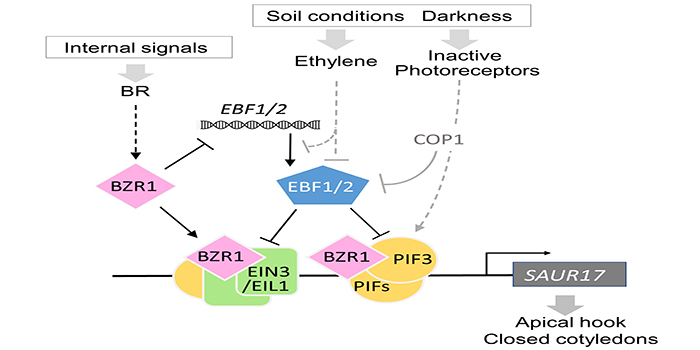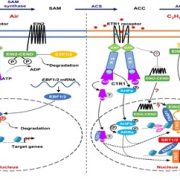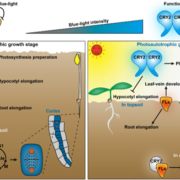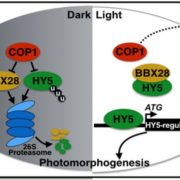How do brassinosteroids promote etiolation of apical organs in Arabidopsis?
Wang et al. explore how plants maintain apical etiolation.
By Jiajun Wang (Southwest University, China), Haodong Chen (Tsinghua University, China), Xing Wang Deng (Peking University, China), Ning Wei (Southwest University, China)
Background: Seeds germinate underneath the soil; to help the shoot tissues emerge from the soil, in plants such as Arabidopsis the shoot forms an apical hook and the cotyledons remain closed and unexpanded. This pointed apex helps the growing plant penetrate through the soil. This process is called etiolated development and is sensitive to environmental signals such as light and soil, but is also regulated by internal hormonal signals such as brassinosteroids (BRs), auxin and more. The molecular nature of the crosstalk between those signals that determine the apical structures has remained unclear. SMALL AUXIN UP RNA17 (SAUR17), a gene that functions in controlling cell size, is expressed solely in apical organs of young dark-grown seedlings to maintain etiolated apical structures.
Question: What signals and factors drive the expression of SAUR17? What signaling inputs and interactions do plants use to maintain apical etiolation?

Findings: Arabidopsis SAUR17 is not regulated by auxin but is stimulated by darkness via PHYTOCHROME-INTERACTING FACTORs (PIFs), by ethylene (which responds to soil mechanical pressure) via ETHYLENE INSENSITIVE 3 (EIN3) and its homolog EIN3-LIKE 1 (EIL1), and by BRs via BRASSINAZOLE RESISTANT1 (BZR1). These transcription factors form protein complexes, which bind and activate the SAUR17 promoter primarily through EIN3 and PIFs. However, BR signaling is necessary for the stability of EIN3 and PIF3 proteins, in part by BZR1-mediated down-regulation of a ubiquitin ligase gene. By elevating EIN3 and PIF3 protein levels and enhancing their promoter-binding activities, BR stimulates the expression of SAUR17 and HOOKLESS1, and ultimately the formation of apical hook.
Next steps: This study suggests that BRs promote etiolated apical structure predominantly by enhancing the ethylene/darkness pathways that responds to environmental cues. SAUR17 expression also reflects the transient and developmental-stage specific nature of etiolation, but the nature of this remains unknown.
Jiajun Wang, Ning Sun, Lidan Zheng, Fangfang Zhang, Mengda Xiang, Haodong Chen, Xing Wang Deng, Ning Wei. (2023). Brassinosteroids promote etiolated apical structures in darkness by amplifying the ethylene response via the EBF-EIN3/PIF3 circuit. https://doi.org/10.1093/plcell/koac316









